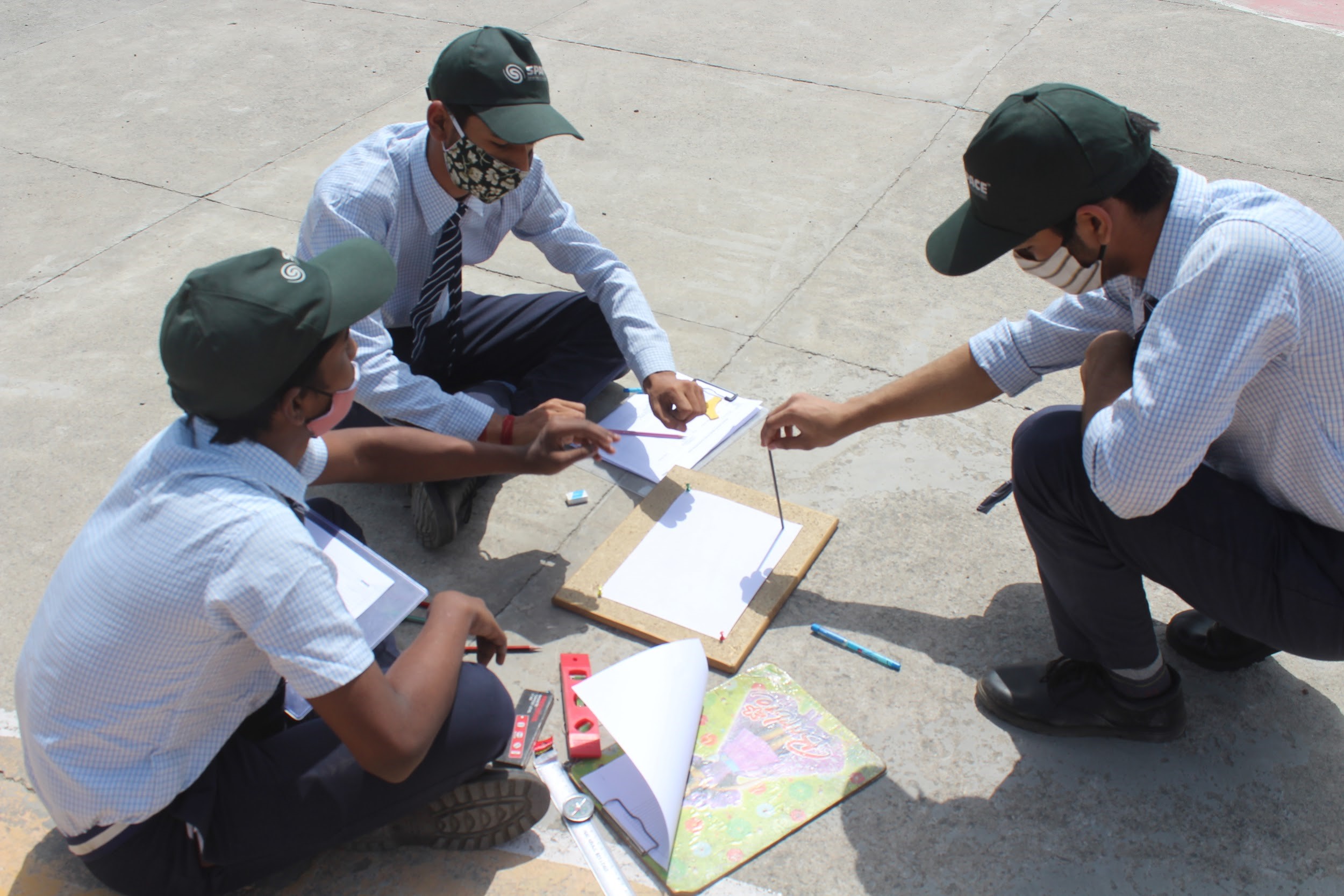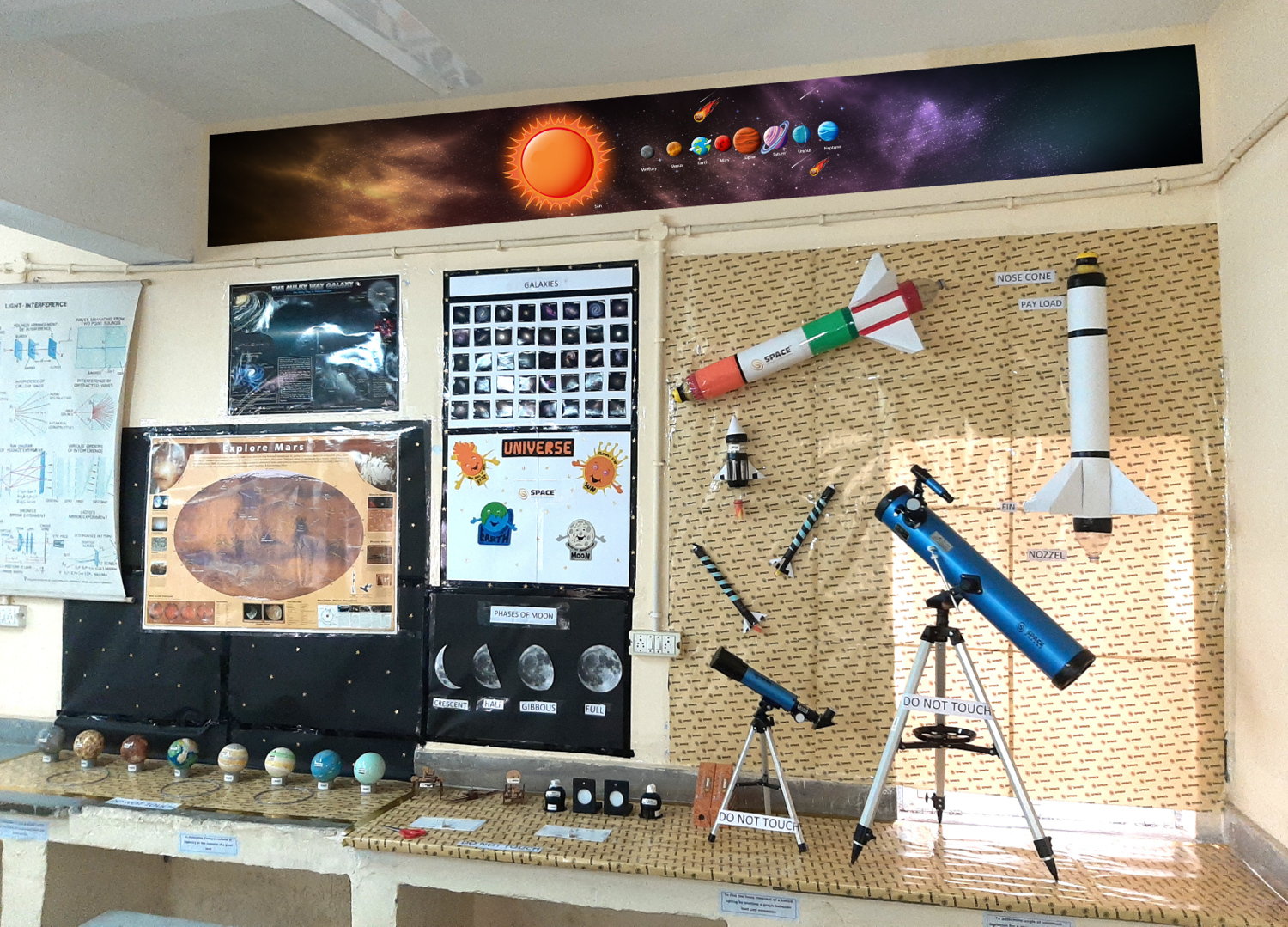
- A+
- A
- A-
March 20, 2021, was the vernal equinox, a day on which the sun’s rays are directly above the earth’s equator. More than 150 students of Jawahar Navodaya Vidyalaya, Jaffarpur Kalan, Sonebhadra, UP Nellore, Andhra Pradesh this year, were using their training from two days back to measure the circumference of the earth using simple household items. These students were trained under Project Paridhi, a chapter of the Khagolshala initiative.

The Office of Principal Scientific Adviser to the Government of India entered into a partnership with Space India for the Khagolshala initiative. “The universe is a laboratory available to all. We just need to open our minds and train our senses to serve its wonders and unravel its mysteries. I am sure that the Khagolshalas will open the window of opportunity for our students to be future astronomers and space scientists of India,” said Prof. K VijayRaghavan, Principal Scientific Adviser to the Government of India.
Here’s a little about the two initiatives featured under Khagolshala: The Khagolshala Asteroids Search Campaign (KASC), and Project Paridhi.
Khagolshala Asteroids Search Campaign (KASC):
Khagolshala Asteroids Search Campaign (KASC) is the India chapter of an international student research program that has got students involved in the search for asteroids. High-quality astronomical data sets are distributed to students for analysis and identification of asteroids. Students analyze the data using software which then leads to potential discoveries. These observations feed into the Near Earth Object (NEO) data being compiled by NASA and the Jet Propulsion Lab (JPL).
Space India has established Khagolshala Astronomy and Space Education Labs (ASELs) across 20 Jawahar Navodaya Vidyalayas to date. Space India is working with a vision to get the younger generation in the country engrossed in astronomy and space sciences; application, exploration, innovation, and research in these areas. The team at Space India works by engaging students through experimentation, observation, and analysis of the universe.
We spoke to Dr. Disha Sawant, a Pune-based astrophysicist to understand why scientists are interested in asteroids. “During the initial phase of the origin of planets, the birth of Jupiter prevented the formation of any substantial planetary bodies between Mars and Jupiter. This caused the collision of the small objects with each other and their fragmentation into the asteroids seen today. This makes asteroids rich sources of information about the history of planets and the sun. Scientists can learn about asteroids by studying meteorites (tiny bits of asteroids that have flown through our atmosphere and landed on Earth’s surface) too,” explained Dr. Sawant.
What does a Khagolshala Astronomy and Space Education Lab look like? ‘Khagolshalas’ were intended to be a disruptive inclusion in the lab infrastructure of educational institutes in India. The introduction will enable the institutions to introduce Astronomy and Space Education as well as hands-on experimentation among students at all levels. To accomplish this, each Khagolshala ASEL is equipped with telescopes, spectroscopes, cameras, rocket launchers, rovers, CANSAT kits, trackers, sundials, java applets to arm the younger generation with 21st-century skills.

As of today, Khagolshalas have contributed to the discovery of more than 7203 asteroids. The last one was HLV2514 by Vaidehi Vekariya and Radhika Lakhani from Surat. Space India’s 17-year-old Aabhaas Sikka also made a miniature satellite, RamanSat 2 which was launched by NASA in June 2019.
So, what goes into discovering an asteroid? We asked Mr. Sachin Bahmba, Chief Managing Director, Space India. “International Astronomical Search Collaboration (IASC) declares discovery of any new asteroid as ‘PRELIMINARY’ and not confirmed ‘DISCOVERY’. PAN-STARRS, the Panoramic Survey Telescope, and Rapid Response System are mandated to take a follow-up image of the discovered asteroid. In case the image is taken, International Astronomical Union’s Minor Planet Centre (MPC) officially recognizes the discovery as ‘PROVISIONAL (confirmed) DISCOVERY’ and is given a temporary designation. Alternatively, the follow-up image is not taken, and it remains a ‘PRELIMINARY DISCOVERY,’ explained Sachin. “Temporary designation is given to a Provisional Asteroid Discovery by the MPC. Once a reliable orbit of the asteroid is calculated, it is called a Numbered Asteroid Discovery with a permanent designation given by MPC. It takes a minimum of six years to calculate the orbit of the Asteroid,” he added. Taking this forward, the second, third, and fourth observations of an asteroid have to be confirmed by NEO.
Project Paridhi
Paridhi (translates to the circumference or boundary) is a flagship project of Space India with a goal to popularize hands-on science. Students are trained to calculate the circumference of the Earth by measuring angles of the shadow cast by the sun on a given day, at a specific location. The method is 3000 years old and was developed by the astronomer Eratosthenes. This project was initiated in 2010 with the intention to encourage experimentation with simple objects. Participation in Paridhi has remained open to all age groups. It is typically conducted on days of Equinoxes and Solstices.
Participants get to learn basic concepts of geometry and trigonometry through experimentation. Some are trained to train others. Space India has stayed open to reach out to schools interested to host this project in their neighborhoods much in coherence with its goal of popularizing science among the masses.
“They have much to look forward to as space sciences thrive in India. Indian Space Research Organization (ISRO) successfully sent a spacecraft to Mars in the first attempt. It then launched 104 satellites in one go! The next 50 years belong to Space Exploration,” says Sachin. “With India’s Chandrayaan and Gaganyaan missions, we as a nation, are set to propel ourselves in niche science and technology domains. Gaganyaan will provide a unique micro-gravity platform in space for conducting experiments and testbed for future technologies. It will enable India to participate as a collaborating partner in future Global space exploration initiatives with long-term national benefits. We need our young generations to be prepared and ready to take the lead in this field.”
Know more about Asteroids:
Record number of asteroids seen whizzing past Earth in 2020
Listen in to Season 2 on Asteroids of a podcast series by the Jet Propulsion Laboratory to learn about discoveries of asteroids and challenges faced by different missions.




